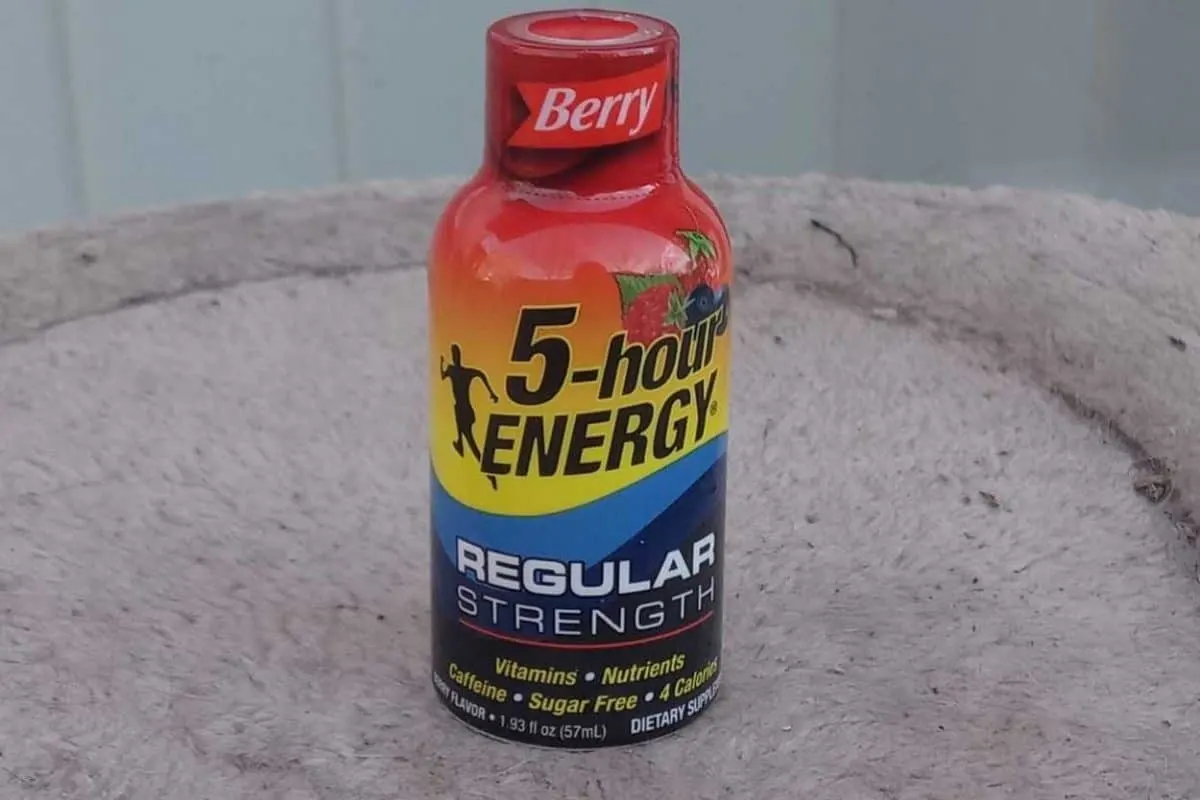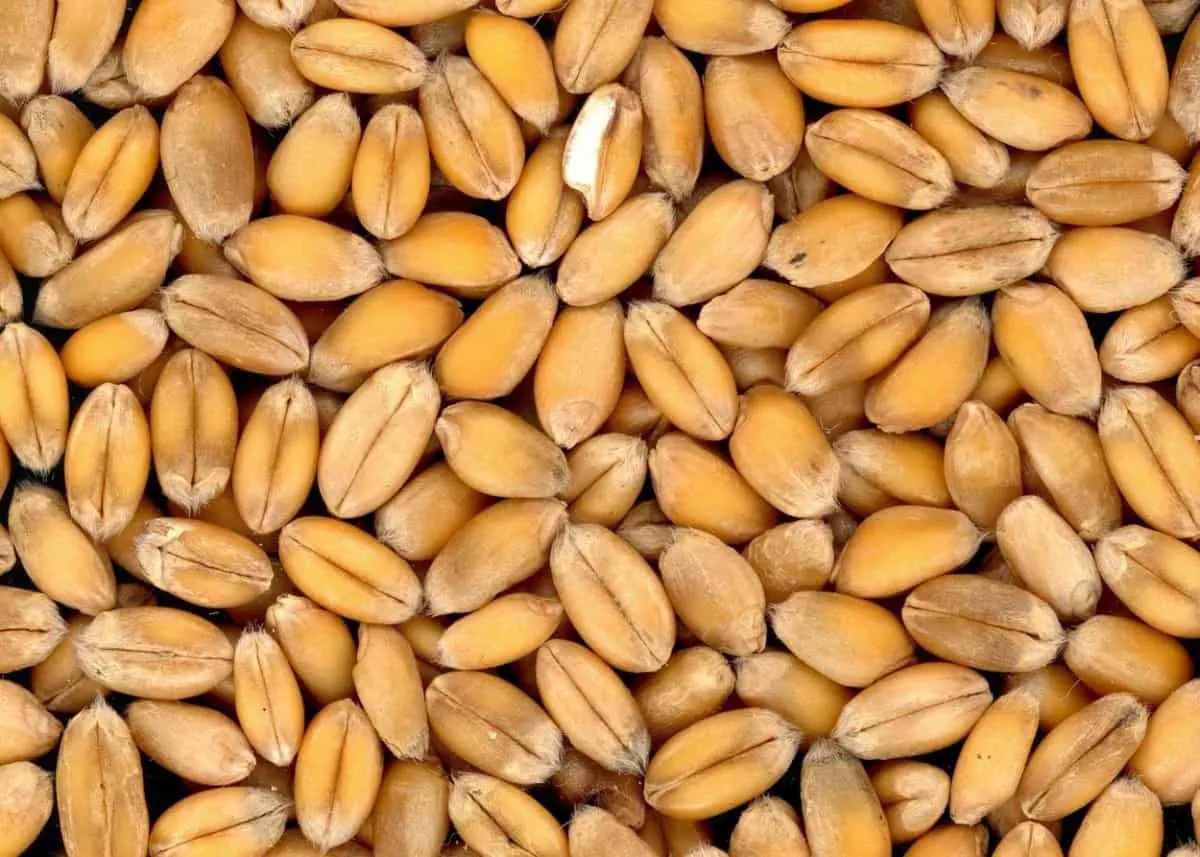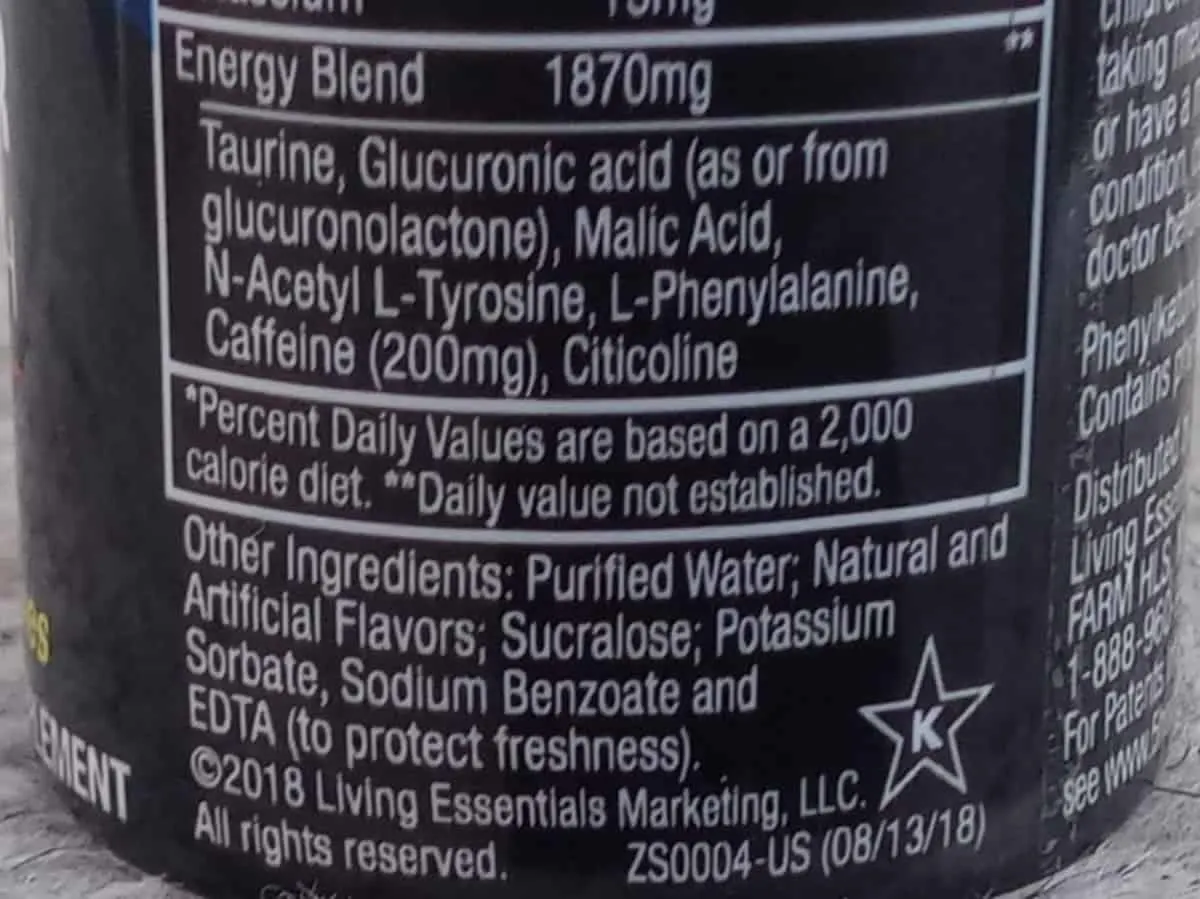5-Hour Energy is credited for being the brand that innovated the energy drink industry by introducing a (basically) miniature version of the average energy drink. This now makes itself a versatile brand that appeals to all types of drinkers.
During this time, everybody has been busy, whether it’s at work, school or just merely surviving, so might as well take whatever help is available, right?

Other than black caffeine, those who follow a gluten-free diet consider having energy drinks as an alternative, including a 5-Hour energy drink.
Good news: 5-Hour Energy is gluten-free as it doesn’t have any gluten products in its ingredients.
Scroll down and I can tell you everything I know. But first, let’s define what an energy shot is and how can it benefit the body.
Contents
What is an Energy Shot?
An energy shot isn’t much different from an energy drink in terms of function. It gives you the boost in energy you need through a mix of caffeine and a bunch of other substances in its formula.
The difference is that an energy shot comes in much smaller and concentrated doses than an energy drink does. That makes the average energy shot much easier to carry than the usual canned drink.
Pros and Cons of Energy Shots
Energy shots also offer fewer calories than most brands of energy drinks. All without compromising the amount of caffeine it has to speed your system up with.
Are energy shots safe to drink though?
Generally, energy shots are safe to drink. They contain as much caffeine as your usual cup of coffee or energy drink, so they aren’t inherently bad for you.
The problem comes when you have a habit of drinking other caffeinated products.
The average healthy adult can safely consume only 400mg of caffeine a day. Any more than that, and they’ll be at greater risk of experiencing the side effects of caffeine.
The common side effects of caffeine are:
- Headaches
- Insomnia
- Foul mood
- Frequent need to go to the bathroom
- Palpitations/Fast heartbeat
- Muscle tremors
Energy drinks and coffee aren’t the only places you can find caffeine either. Caffeine is also present in chocolate, tea, and soft drinks. So if you eat or drink a lot of those, you’ll have to be careful of how much coffee and energy drinks you have in a day.
What is a Gluten-Free Diet?

A gluten-free diet is a diet that excludes any and all sources of gluten. Gluten is a protein family found in grains like wheat, barley, and rye. It’s what gives bread its elastic texture and allows it to keep its shape.
Gluten also contains two main proteins: glutenin and gliadin. Of the two, gliadin is the one responsible for most of the side effects associated with gluten.
Although gluten’s association with breads and grain makes it seem easy to avoid, it’s actually much harder than it looks. See, it’s not just the grains themselves that need to be avoided. You need to avoid anything made from them too.
Here’s a list of the foods you need to avoid in a gluten-free diet:
- Pasta
- Noodles
- Breads
- Cereal
- Granola bars
- Soy Sauce
- Gravy
- Beer
- French fries
So if you like any of these, keeping a gluten-free diet may be difficult. More so since cross-contamination is always a possibility when dealing with products that aren’t explicitly gluten-free.
Cross-contamination is when a product contracts trace amounts of gluten through shared storage and handling spaces.
Many people who observe a gluten-free diet do it to monitor health conditions. In this case, the gluten-free diet can either alleviate symptoms or simply avoid a trip to the hospital. Some of these diseases are celiac disease, non-celiac gluten sensitivity, and wheat allergy.
Celiac disease is an autoimmune disorder wherein the immune system mistakes the gluten being digested for a foreign body. Because of that, the immune system launches an attack on it and damages the small intestine in the process.
This damage to the small intestine can cause problems absorbing nutrients, anemia, and an increased risk of other diseases.
The symptoms of Celiac disease are:
- Bloating
- Foul mood
- Diarrhea
- Constipation
- Headache
- Fatigue
- Rashes
- Unexplained weight loss
Non-Celiac gluten sensitivity is any condition where a patient doesn’t test positive for Celiac disease but has trouble with gluten anyway. It can be hard to diagnose because it shares many symptoms with Celiac disease.
Wheat allergy is a kind of food allergy. It’s caused by the immune system mistaking gluten for a virus or disease-causing bacteria and raising its defenses against it. This causes the typical symptoms of an allergic reaction like nasal congestion and sneezing.
5-Hour Energy Ingredients

- Purified Water
- Natural and Artificial Flavors
- Sucralose
- Potassium Sorbate
- Sodium Benzoate
- EDTA
- Taurine
- Glucuronic Acid
- Malic Acid
- N-Actyel L-Tyrosine
- L-Phenylalanine
- Caffeine
- Citicoline
Out of all the ingredients mentioned, there are specific components that are vital to the efficacy of 5-hour energy, all of which are considered gluten-free.
But if you would like a more in-depth look at the ingredients as well the caffeine content, have a look at the 5 Hour Energy Caffeine and Ingredients article that I’ve written, for a detailed analysis.
Is Caffeine Gluten-Free?

Caffeine is synthesized from coffee beans, and its processing has nothing to do with wheat or any other kind of grain. So assuming you drink your coffee black, there’s no need to give that up for a gluten-free diet either.
The only time caffeine isn’t gluten-free is when it was cross-contaminated in the manufacturing facility. It can also contain gluten if the formula it was used in required the caffeine to be mixed with non-gluten-free substances (e.g coffee with creamer).
Is Taurine Gluten-Free?
Taurine is an amino acid that’s involved in many functions of the body. It can be produced in the body, but can also be obtained in supplements and food, which includes meat, fish, and dairy products.
Unlike most amino acids, taurine isn’t used to synthesize proteins. Instead, it assists in other functions your body needs.
The known perks of taurine are:
- Maintaining hydration and electrolyte count in cells
- Forming bile salts your body can use in digestion
- Regulating calcium levels in the cells
- Supporting nervous system functions
- Maintaining eye health
- Regulating antioxidants
As a result, you get better resistance to disease, better bone health, better eye health, and improved athletic performance.
Is Sucralose Gluten-Free?
Sucralose is an artificial sweetener that’s made in a lab from sucrose (sugar). It’s manufactured through a process that involves replacing three hydrogen-oxygen groups with chlorine atoms. It has a chemical structure that prevents it from being absorbed by the body during digestion.
It is also better known through its brand name, Splenda which is being used to flavor thousands of products worldwide. Specifically, Splenda is associated with sugar-free products intended for diabetics and people who want to lose weight.
And contrary to what most people would assume, it’s actually sweeter than sugar. 600 times sweeter to be exact.
Is Glucuronic Acid Gluten-Free?
Glucuronic acid is a water-soluble amino acid that comes from sugar. When added to food, it’s used as a chelating agent and acidity regulator. Besides whatever it’s added to, glucuronic acid can also be found in some foods and is safe to consume for your gluten-free diet.
Foods that contain Glucuronic acid are:
- Fruits
- Wine
- Honey
- Rice
- Meat
- Kombucha fermentation
When it’s manufactured, Glucuronic acid is made through the oxidation of D-glucose. The most common processes used to accomplish this are using Bromine water, microorganisms, and enzymes that are derived from microorganisms. Like many amino acids found in food, Glucuronic acid has its own health benefits to offer.
The health benefits of taking Glucuronic acid are:
- Prevention of urinary stones
- Better intestinal microflora growth
Is Malic Acid Gluten-Free?
Yes, Malic acid is gluten-free.
Malic acid can be found in fruits, especially apples. When it’s a food additive, Malic is used to regulate acidity. Like caffeine, it’s highly unlikely to have any kind of gluten in it unless it was cross-contaminated during the manufacturing process.
Malic acid is usually used to regulate acidity in the following products:
- Soft drinks
- Energy drinks
- Fruit and vegetable juices
- Jam
If anything, Malic acid is common in gluten-free food. That’s because besides being good for regulating acidity, Malic acid also provides sour flavoring.
Is Citicoline Gluten-Free?
Citicoline is a brain chemical that’s produced by the body. It increases the chemicals that allow the different parts of the brain to communicate.
As a prescription drug, it was used by the Japanese and Europeans to improve memory, focus, and other cognitive functions. In the United States, it’s usually sold as a dietary supplement instead.
It’s usually taken by mouth by people recovering from illness. People who take Citicoline as a medication usually have glaucoma or are recovering from a stroke. However, Alzheimer’s, Bipolar disorder, and Parkinson’s disease patients are also known to take this sometimes.
Citicoline can also be taken as an injection to the muscle.
Are Natural Flavors Gluten-Free?
Natural Flavors are usually gluten-free.
Natural Flavors refer to anything made from a plant or animal that is used to flavor food. So yes, it’s possible that this can refer to grains like wheat, rye, and barley at times.
However, wheat being a common allergen means it’s usually specified in the allergy warning or ingredients list when it’s used. So unless you see it on either of those, there’s no need to worry about gluten being in there.
When looking for possible sources of gluten in either list, look out for anything connected to malt and anything related to other gluten-containing grains.
The only exception to this so far is Maltodextrin. Maltodextrin is derived from starch, which sometimes comes from wheat or barley. But, the processing it goes through removes its gluten content. Thanks to that, it’s safe to consume Maltodextrin even if you have Celiac disease or wheat allergy.
Gluten-Free Alternatives
Aside from 5-hour energy, you can also find other gluten-free alternatives that are popular online and can be purchased directly from local grocery. These are the following:
All of these drinks contain gluten-free ingredients with a variety of flavors to choose from.
Final Verdict
5-Hour Energy shots are gluten-free it doesn’t contain any gluten-containing ingredients. The only bit of grey area in the ingredients list is in the Natural Flavors label, which isn’t really surprising.
It’s also been confirmed in the official website’s FAQ section that 5-Hour Energy is gluten-free.
If you still have any concerns about the processes used to manufacture 5-Hour Energy and its ingredients, go ahead and contact the manufacturers directly. They’re the best sources for any information regarding 5-Hour Energy’s formula.
But if your lingering concerns are about what impacts 5-Hour Energy might have on your health, talk to your doctor instead.
As for my opinion, I’m a little on the fence about this one. I can definitely see why an energy shot might be more convenient. But I also think having concentrated amounts of caffeine in small amounts might make it harder than usual to keep track of caffeine intake.
Either way, it’s fine in moderation like everything else is.
Here’s a product review you can watch if you’re curious about what 5-Hour Energy is actually like. The video also has an analysis of the ingredients that go into 5-Hour Energy and how it works. There’s even a taste test at the end you can reference when picking out which to buy.
